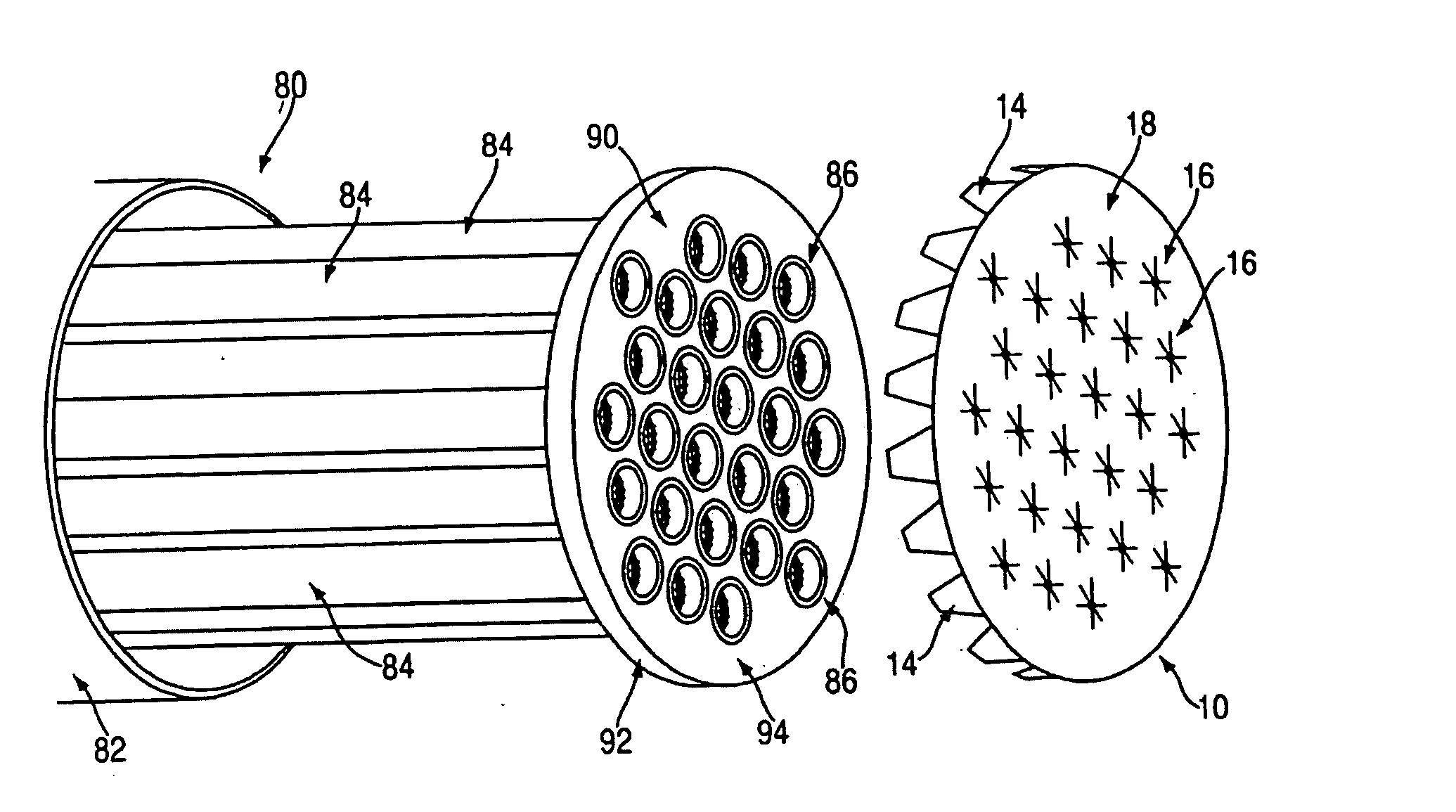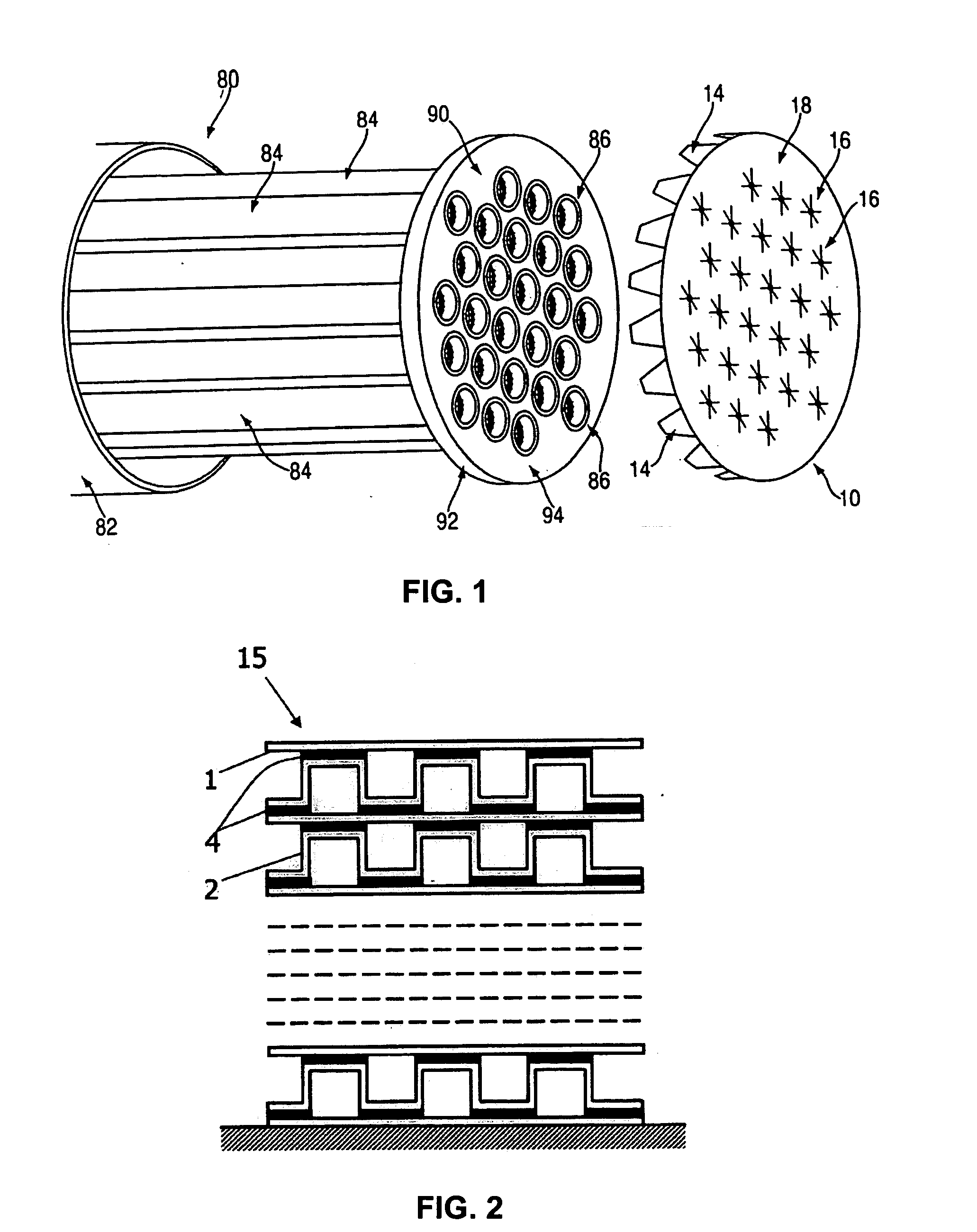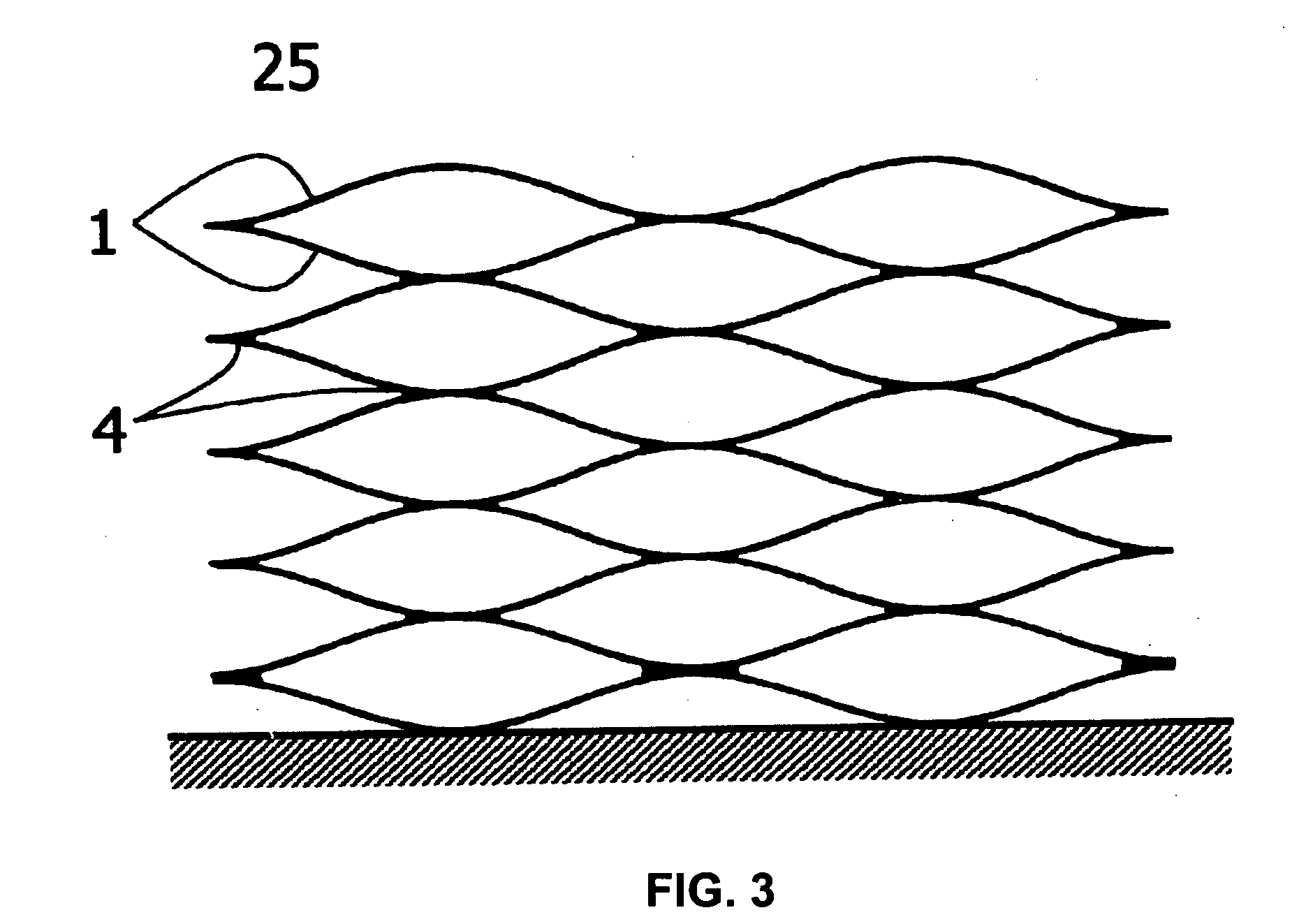Iron-based brazing filler metals
a filler metal and iron-based technology, applied in the direction of manufacturing tools, lighting and heating equipment, soldering apparatus, etc., can solve the problems of significant replacement device and associated labor costs, adversely affecting the propensity of stainless steel to leach, and poor corrosion resistance of heat exchangers using copper as the brazing filler metal. , to achieve the effect of low nickel leaching rate and effective general corrosion resistan
- Summary
- Abstract
- Description
- Claims
- Application Information
AI Technical Summary
Benefits of technology
Problems solved by technology
Method used
Image
Examples
example 1
Preparation of Iron-based Brazing Filler Metal Strip
[0047] Strips of about 2.5 to 25 mm (about 0.10 to 1.00 inch) width and about 18 to 50 μm (about 0.0007 to 0.002 inch) thick are formed by squirting a melt of a preselected composition, such as the composition with the formula FeaCrbBcSidXe noted above, by overpressure of argon onto a rapidly rotating copper chill wheel (surface speed about 3000 to 6000 ft / min.). Metastable, ductile, homogeneous ribbons of substantially glassy alloys comprising essentially the compositions (atom percent) set forth in Table I are produced, wherein “bal.” for iron indicates a balance (100% minus the values stated for other components of the composition).
TABLE IFeCrCoNiMoWBSialloy 1bal.2.0156alloy 2bal.119alloy 3bal.1010alloy 4bal.1510alloy 5bal.1210
example 2
Characterization of Iron-based Brazing Filler Metal Strip
[0048] The liquidus and solidus temperatures of selected ribbons having compositions set forth in Table I are determined by a Differential Thermal Analysis (DTA) Technique. The individual samples are heated side by side with an inert reference material at a uniform rate, and a temperature difference between the individual sample and the inert reference material is measured as a function of temperature. A resulting curve, conventionally known as a thermogram, is a plot of relative changes in the temperatures of the sample and the reference materials during simultaneous heating vs. temperature, from which the beginning of melting and end of melting, which represent the solidus and liquidus temperatures, respectively, are determined. Values thus determined are set forth in Table II below.
TABLE IISolidusLiquidusalloy 11174° C. (2145° F.)1182° C. (2157° F.)alloy 21138° C. (2080° F.)1168° C. (2134° F.)alloy 31151° C. (2104° F.)1...
PUM
| Property | Measurement | Unit |
|---|---|---|
| thickness | aaaaa | aaaaa |
| liquidus temperature | aaaaa | aaaaa |
| liquidus temperature | aaaaa | aaaaa |
Abstract
Description
Claims
Application Information
 Login to View More
Login to View More - R&D
- Intellectual Property
- Life Sciences
- Materials
- Tech Scout
- Unparalleled Data Quality
- Higher Quality Content
- 60% Fewer Hallucinations
Browse by: Latest US Patents, China's latest patents, Technical Efficacy Thesaurus, Application Domain, Technology Topic, Popular Technical Reports.
© 2025 PatSnap. All rights reserved.Legal|Privacy policy|Modern Slavery Act Transparency Statement|Sitemap|About US| Contact US: help@patsnap.com



